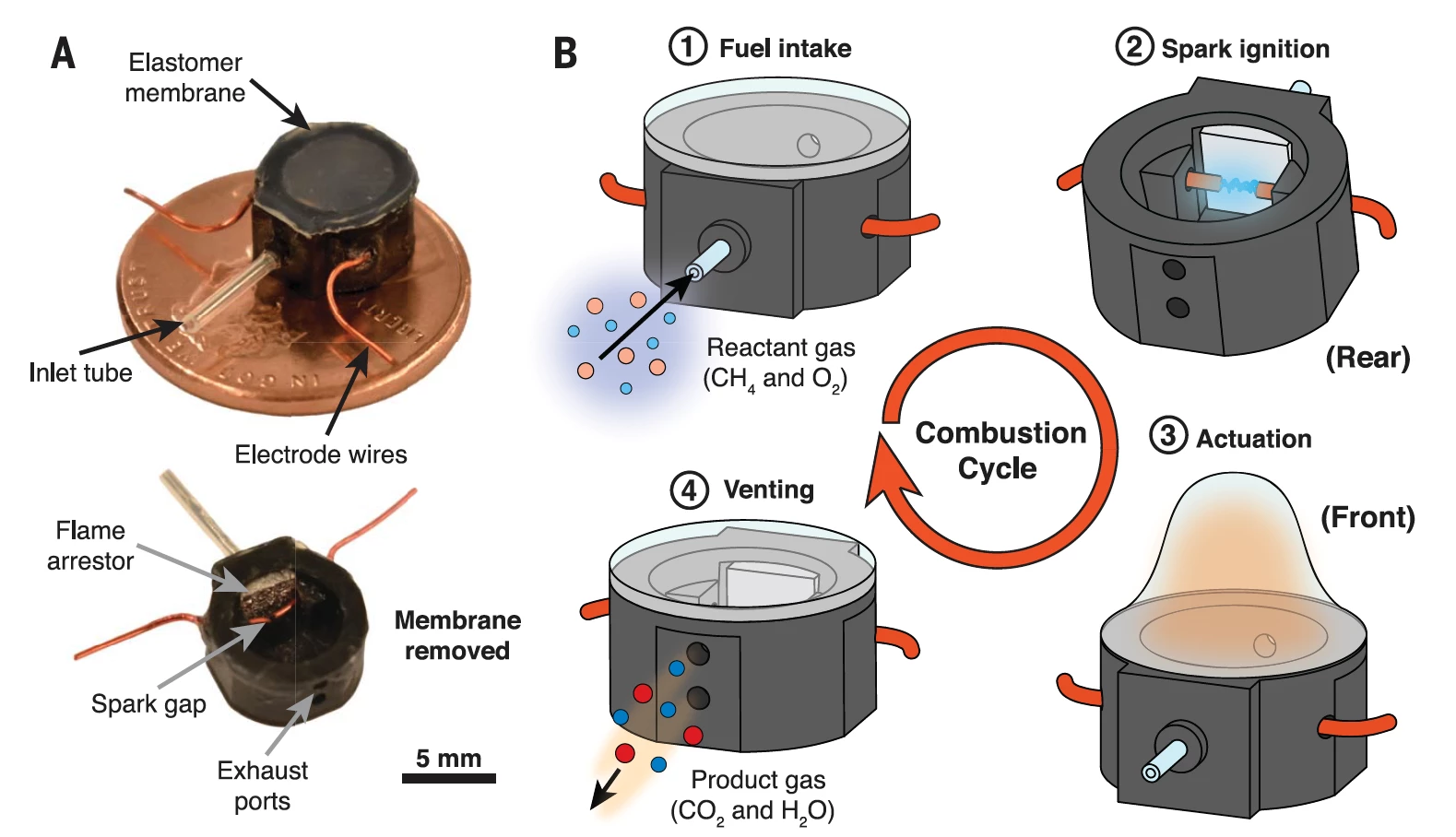Most robots use electric actuators, but this little fella packs a lot more punch. Researchers have created a new type of minuscule combustion engine that gives this tiny frog robot explosive leaping abilities, as well as fine movement control.
The idea of a robot running on combustion fuel seems very last century, but as a team from Cornell University's Organic Robotics Lab points out, today's batteries are heavy and they don't carry much energy – so there are limits on how much performance you can get out of electric actuators.
Those limits are a lot higher if you switch to energy-dense chemical fuels, so the team set about designing a fascinating new type of rapid, high-frequency robotic actuator that runs a lot like a regular combustion engine.
Somewhere around 5 mm (0.2 in) in diameter, these tiny actuators accept methane and oxygen into a simple 0.09-ml combustion chamber, and light it up with a spark. The chamber is covered at the top with a highly elastic silicone Dragon Skin membrane, which acts a bit like the piston in a car engine, stretching out to expand the chamber volume as the fuel burns, then recovering quickly to push the exhaust gases out tiny vents in the sides.

This all happens very quickly, but the end result is this: the bigger the bang, the more the membrane pops out. The actuators can cope with bangs that expand the chamber volume by as much as 140%, representing forces greater than 9.5 N, and they're fast, too, operating at frequencies over 100 cycles per second if required.
The Cornell team embedded 3D-printed prototypes of these little combustion actuators above the foot pads of a tiny, rigid four-legged frog robot, such that any time a particular actuator's membrane pops out, the foot gets pushed downward. They designed a control scheme that could vary the spark frequency, fuel equivalence ratio and fuel flow of the actuators, then coupled these controls for the two left legs and two right legs, and then set about seeing what they could make the robot do.
They successfully got it to crawl forward in a vibrating gait, and hop forward at various heights, including hopping up onto higher surfaces. They created a snake-like forward walk based on rotation, and got it to spin clockwise or anticlockwise on the spot.
Proving the actuator's explosive capabilities, they made the robot jump an impressive 56 cm (1.8 ft) in the air, and they demonstrated that it could move on a variety of different solid, high and low friction, and loose surfaces. And they loaded it up with 32 grams of cargo weight – more than 22 times the robot's own body weight – and showed they could still control its movement.
At the end of it all, these little actuators could give roboticists a handy extra option when super-quick movements are required – imagine if Atlas had the ability to explosively assist its leg hydraulics, for example, or throw a combustion-powered punch. Eep.
The research is available in the journal Science. Check out a video below. Apologies for the music, I couldn't help myself.
Source: via IEEE Spectrum






